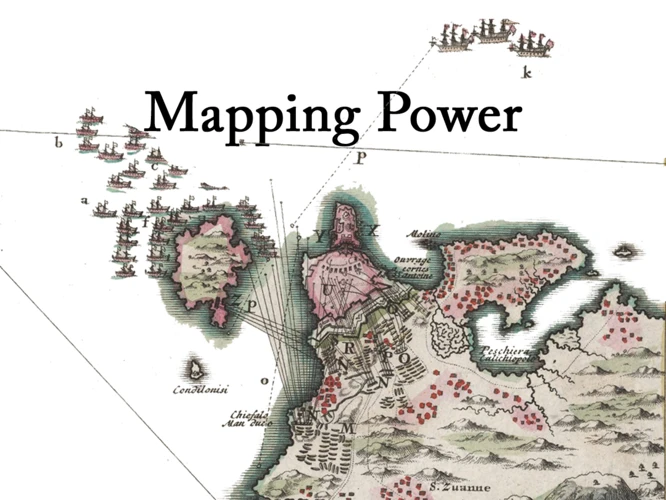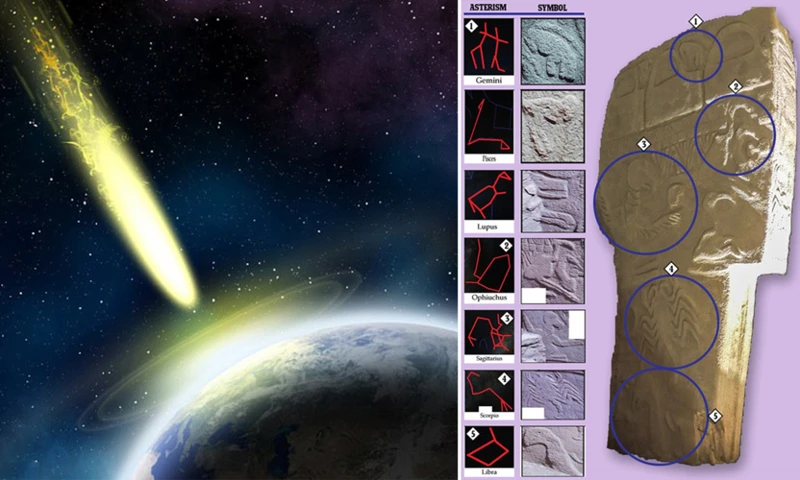The ancient Silk Road stands as a testament to the incredible interconnectedness of our world. Stretching thousands of miles across vast landscapes, this global crossroads of trade and culture served as a lifeline between East and West for centuries. It was a network of routes that spanned from China to the Mediterranean, facilitating the exchange of goods, ideas, and beliefs. Delving into the origins, major trade routes, and impacts of the Silk Road, this article explores the intricate web of commerce and cultural exchange that shaped our history. Come with us on a journey through time, where you’ll uncover the secrets and marvels of this legendary trade route.
Contents
- The Origins of the Silk Road
- Major Trade Routes and Cities
- Goods Traded on the Silk Road
- Impacts of the Silk Road
- Conclusion
-
Frequently Asked Questions
- How did the Silk Road get its name?
- What were some of the major trade routes of the Silk Road?
- What were the influential cities along the Silk Road?
- What goods were traded on the Silk Road?
- How did the Silk Road impact cultural exchange?
- What were some of the technological innovations that occurred on the Silk Road?
- How long did the Silk Road exist?
- Did the Silk Road have an impact on the development of astronomy and astrology?
- What were some dangers and challenges faced by travelers on the Silk Road?
- How did the decline of the Silk Road influence global trade?
- References
-
Frequently Asked Questions
- 1. What is the Silk Road?
- 2. When was the Silk Road established?
- 3. How long is the Silk Road?
- 4. What goods were traded on the Silk Road?
- 5. Were there any dangers or obstacles along the Silk Road?
- 6. Did the Silk Road only facilitate trade?
- 7. How did the Silk Road impact different civilizations?
- 8. Why is silk called the Silk Road?
- 9. What were some notable cities along the Silk Road?
- 10. Is the Silk Road still important today?
- References
- Read More
The Origins of the Silk Road

The origins of the Silk Road are shrouded in mystery and intrigue. It is believed to have emerged as a network of trade routes as early as the 2nd century BCE, connecting ancient civilizations and cultures. The early trade routes, which predated the official establishment of the Silk Road, were a result of the flourishing commerce between China and neighboring regions. China played a pivotal role in the development of the Silk Road, as it was not only the starting point of the trade routes, but also the source of the coveted silk that became the backbone of this vast trading network. The Silk Road was not only a conduit for the physical exchange of goods, but also for the transmission of ideas, cultures, and religions. It laid the foundation for cross-cultural interactions and the sharing of knowledge, leaving a lasting impact on the world as we know it today.(source)
The Early Trade Routes
The early trade routes that laid the foundation for the Silk Road were a complex web of paths and trails that facilitated the exchange of goods and ideas between various ancient civilizations. One of the earliest trade routes was the Eurasian Steppe Route, which connected China with Central Asia and the Persian Empire. This route allowed for the trade of goods such as jade, silk, and bronze between these regions. The Indian Ocean Maritime Route was another crucial trade route during this time, linking China with the Indian subcontinent, Southeast Asia, and the Middle East. This maritime route was essential for the trade of luxury goods, spices, and precious metals. Additionally, the Silk Road also saw the emergence of the Tea Horse Road, which connected Southwest China with Tibet and facilitated the trade of tea and horses. These early trade routes played a significant role in the development of cross-cultural interactions and economic prosperity in the ancient world. They paved the way for the establishment of the official Silk Road and set the stage for centuries of trade and cultural exchange to come.
China’s Role in the Silk Road
China played a pivotal role in the Silk Road, as it was the epicenter of its origins and a key player in the vast trading network. The ancient Chinese civilization had a profound impact on the development and success of the Silk Road. One of the main reasons for China’s significance was its production of silk, a highly coveted luxury item that became the namesake of the trade route. Chinese silk was renowned for its exquisite quality and craftsmanship, captivating traders and buyers from distant lands. The Silk Road enabled China to export not only silk, but also other valuable commodities such as tea, porcelain, jade, and spices.
China’s role extended beyond being a prominent exporter. The country was also a major consumer of goods from other regions, including Central Asia, the Middle East, and Europe. This demand for foreign goods fueled the growth of commerce along the Silk Road. Chinese merchants and traders traveled vast distances to establish trade networks and establish connections with different cultures and civilizations. The trade between China and other regions was not limited to material goods; it also facilitated the exchange of ideas, technologies, and philosophies.
China’s political stability and the protection of the Silk Road by the ruling dynasties such as the Han, Tang, and Yuan contributed to the longevity and flourishing of this ancient trade route. As China’s influence expanded, so did the Silk Road, connecting the Eastern and Western worlds in an unprecedented manner. It became a conduit for cultural exchange, fostering the spread of Buddhism, Christianity, Islam, and other religions throughout Asia and beyond. Chinese explorers and diplomats like Zhang Qian and Zheng He played crucial roles in forging diplomatic ties and establishing trade relationships between China and neighboring regions.
China’s role in the Silk Road was multifaceted and irreplaceable. It was not only the origin of the Silk Road but also a vital hub connecting different regions, cultures, and ideologies. The country’s contributions to trade, technology, and cultural exchange shaped the history and legacy of the Silk Road.(source)
Major Trade Routes and Cities

The Silk Road encompassed a vast network of trade routes that spanned both land and sea, connecting numerous cities along its path. The land routes were the arteries through which goods and ideas flowed, traversing harsh deserts, rugged mountains, and fertile plains. One of the most famous land routes was the northern route, which started in China and passed through the ancient cities of Samarkand and Bukhara in Central Asia before reaching the bustling markets of Baghdad. The southern route, on the other hand, stretched from China to India, featuring crucial stops in cities like Kashgar and Dunhuang. The maritime routes, which were dominated by skilled sailors and merchants, extended the Silk Road to the shores of the Indian Ocean, with important port cities such as Guangzhou and Quanzhou serving as vibrant trading hubs. Each city along the Silk Road had its unique charm and significance, be it for its strategic location, cultural diversity, or economic prosperity. The exchange of goods and ideas among these cities fostered a rich tapestry of cultures and impacted the development of societies along the Silk Road. (source)
The Land Routes
The land routes of the Silk Road were a complex network of trails and paths that traversed vast terrains, connecting various regions and civilizations. One of the most well-known land routes was the northern route, which began in China and passed through Central Asia, traversing the deserts of Xinjiang and the fertile lands of the Fergana Valley. This route then split into two, with one branch heading towards the Caspian Sea and the other towards the Black Sea.
The central route, also known as the Taklamakan route, was renowned for its treacherous desert crossings. It started from Xi’an in China and led westward through the Taklamakan Desert, reaching the oasis cities of Dunhuang and Kashgar. From there, it continued to the Pamir Mountains before branching off towards various destinations such as Samarkand and Bukhara in present-day Uzbekistan.
The southern route branched off from the central route and ventured through the harsh terrains of the Karakoram and Hindu Kush mountains. This route took travelers through present-day Pakistan, Afghanistan, and Iran, eventually reaching the Mediterranean coast.
These land routes were not only trade routes but also cultural arteries. The transmission of goods, ideas, and beliefs occurred along these paths, shaping the civilizations that thrived on their fringes. Along the land routes, bustling cities and trading posts emerged, serving as vital hubs for commerce and cultural exchange. The land routes of the Silk Road fostered a sense of unity among diverse communities and contributed to the formation of a global network of trade and cultural intermingling.
The Maritime Routes
The Maritime Routes of the Silk Road played a crucial role in the exchange of goods and ideas between different regions. These sea routes connected China with various ports in Southeast Asia, India, the Arabian Peninsula, and even as far as the eastern coast of Africa. The maritime trade flourished due to advancements in shipbuilding technology and navigation techniques. Chinese porcelain, silk, and spices from Southeast Asia were among the highly sought-after commodities traded along these routes.
One of the key maritime routes of the Silk Road was the Indian Ocean route. It connected China with India, the Arabian Peninsula, and the East African coast. Ships laden with Chinese goods would set sail from ports such as Guangzhou and Quanzhou and travel to places like Calicut, Muscat, and Malindi. The ships would then carry back luxury goods, spices, gemstones, and precious metals. This maritime route not only facilitated trade but also fostered cultural exchange and the spread of religions such as Buddhism and Islam.
Another important maritime route was the Red Sea route. This route connected China with the eastern coast of Africa through the Red Sea and the Arabian Sea. Ships from China would sail to ports such as Aden and Jeddah, where the goods would be further transported overland to Alexandria, a major trade hub in Egypt. From Alexandria, the goods would be distributed to the Mediterranean and Europe, extending the reach of the Silk Road.
The maritime routes of the Silk Road were not without challenges. Navigating the open seas was risky, and ships had to contend with adverse weather conditions, pirate attacks, and the lack of accurate navigational instruments. However, the allure of the lucrative trade and the potential for immense profits encouraged merchants to brave these obstacles.
The maritime routes of the Silk Road were instrumental in connecting the East and the West, enabling the exchange of goods, cultures, and ideas across vast distances. They transformed the ancient world, fostering economic growth, cultural diversity, and technological advancements along the way.(source)
Influential Silk Road Cities
Throughout its history, the Silk Road was dotted with numerous influential cities that served as bustling hubs of trade and cultural exchange. One such city was Xi’an, located in present-day China, which served as the eastern starting point of the Silk Road. Xi’an was not only a major trading center but also a melting pot of diverse cultures, attracting merchants, scholars, and travelers from all corners of the world. Another prominent Silk Road city was Samarkand, located in present-day Uzbekistan. Samarkand was renowned for its central location, making it a key intersection for trade routes coming from China, India, Persia, and Europe. Its strategic position allowed it to thrive as a cosmopolitan city, where goods, ideas, and cultures converged. Kashgar, in present-day western China, was another influential Silk Road city. Situated at the crossroads of the northern and southern routes, Kashgar became a vital trading post for goods traveling between China and Central Asia. It was known for its vibrant markets, bustling with merchants and their exotic goods. Moving westward, the city of Palmyra, located in the Syrian desert, played a significant role as a connecting point between the eastern and western Silk Road routes. Palmyra’s prosperity depended on its strategic position, which allowed it to control the trade of valuable goods such as silk, spices, and precious metals. The city of Constantinople (now Istanbul) in present-day Turkey was not only a crossroads of the Silk Road but also the last stop before goods reached Europe. As the capital of the Byzantine Empire, Constantinople offered a gateway into Europe, facilitating the flow of goods, knowledge, and cultures. These influential Silk Road cities became melting pots of diverse cultures, knowledge centers, and economic powerhouses, shaping the world as we know it today.
Goods Traded on the Silk Road

The Silk Road was a bustling hub of trade and commerce, facilitating the exchange of a wide variety of goods between East and West. Luxury goods were amongst the most sought-after items on this ancient trade route. From exquisite silk fabrics and intricate porcelain to precious gemstones and rare metals, these luxurious commodities fueled the desires of affluent buyers across different lands. Spices and herbs also played a significant role in the Silk Road trade, as they added flavor and medicinal value to cuisines and remedies in various regions. The Silk Road was not only a pathway for physical goods, but also for the dissemination of religious and philosophical ideas. Buddhism, Taoism, and other belief systems traveled along this vast network, shaping the spiritual landscapes of societies along the way. This exchange of goods and ideas sparked cultural syncretism and brought about a rich tapestry of diversity that still influences our world today.(source)
Luxury Goods
Luxury goods were highly sought after and played a significant role in the trade along the Silk Road. These exquisite and exclusive items were symbols of wealth, power, and prestige, and their demand spanned across different cultures and civilizations. The Silk Road facilitated the exchange of a variety of luxury goods, including but not limited to:
1. Silk: Silk was the most iconic luxury item traded on the Silk Road, and it became synonymous with the trade route itself. China, particularly the Han Dynasty, held a monopoly on silk production for centuries. The fabric was renowned for its softness, shimmering appearance, and intricate designs. It was highly valued in the West, and silk textiles were sought after by Roman elites, as well as kings and aristocrats in other regions.
2. Spices: Exotic spices like pepper, cloves, cinnamon, and nutmeg were in high demand along the Silk Road. These aromatic treasures not only added flavor to food but were also believed to have medicinal properties. The Silk Road facilitated the transportation of these precious spices from their places of origin in Southeast Asia and India to markets in the West.
3. Precious Metals and Gemstones: Gold, silver, and gemstones were considered luxurious and valuable commodities. These rare materials were used to create intricate jewelry, ornaments, and embellishments. Cities along the Silk Road, such as Samarkand and Kashgar, served as flourishing trading hubs for precious metals and gemstones.
4. Porcelain: Chinese porcelain, renowned for its exquisite craftsmanship and delicate designs, was another luxury good traded on the Silk Road. The demand for fine Chinese ceramics extended far and wide, with merchants transporting these fragile items with great care, ensuring safe delivery to distant markets.
5. Textiles and Carpets: Alongside silk, other textiles such as fine wool, cotton, and linen fabrics were also traded on the Silk Road. These textiles, woven with intricate patterns and vivid colors, captured the attention of traders and customers across different regions. Carpets, especially Persian and Central Asian rugs, were highly coveted luxury items known for their craftsmanship and artistic beauty.
The trade in luxury goods not only fueled economic growth along the Silk Road but also fostered cultural exchange and appreciation for the craftsmanship of different civilizations. These items ultimately became symbols of status and refinement, showcasing the diverse tastes and preferences of individuals and societies along this historic trade route.
Spices and Herbs
Spices and herbs played a crucial role in the trade along the Silk Road, captivating the senses and adding depth and flavor to cuisines across different regions. The Silk Road served as a conduit for the exchange of a diverse array of spices and herbs, which were highly sought after for their medicinal value, culinary uses, and aromatic qualities. One of the most coveted spices was the legendary Chinese peppercorn, known for its numbing and fiery taste. It was traded alongside other spices like cardamom, cinnamon, and cloves, which were highly valued for their versatility in cooking and preserving food. Additionally, the Silk Road facilitated the spread of herbs with medicinal properties, such as saffron, turmeric, and ginseng. These herbs were esteemed for their healing properties and were used in traditional medicine practices across different cultures. The demand for spices and herbs along the Silk Road not only fueled trade but also fostered cultural exchange and innovation in the culinary arts and medicine.(source)
Religious and Philosophical Ideas
Religious and philosophical ideas were crucial elements that traversed the Silk Road, shaping the spiritual landscape of the ancient world. As this vast network of trade routes facilitated cultural exchange, it also became a conduit for the dissemination of religious beliefs and philosophical concepts. One of the most significant religious ideas that spread along the Silk Road was Buddhism, which originated in India and found its way to China and other parts of Asia. Buddhist monasteries and stupas were established along the route, attracting pilgrims and spreading Buddhist teachings.
Another prominent religious influence was Christianity, which began its journey from the eastern Mediterranean and made its way to Central Asia through the Silk Road. Nestorian Christianity, in particular, gained popularity in China during the Tang Dynasty. Zoroastrianism, a Persian religion, also made its mark along the Silk Road, especially in Central Asia.
Philosophical ideas also flourished along the Silk Road. Confucianism, a system of moral and ethical teachings, had a profound impact on the cultures of East Asia. Taoism, a philosophy centered around harmony with nature, was another significant belief system that found its way from China to other parts of Asia.
The Silk Road served not only as a physical trade route but also as a conduit for the exchange of ideas and religious beliefs. The interactions and encounters between different cultures and civilizations fostered a rich and diverse spiritual landscape, where ideas flowed freely and syncretism emerged. This blend of religious and philosophical ideas profoundly influenced the regions connected by the Silk Road, leaving a lasting legacy that still resonates today.(source)
Impacts of the Silk Road

The Silk Road’s impacts were far-reaching and profound, shaping the course of history in various ways. One of the key impacts of this ancient trade route was the cultural exchange and syncretism that took place. As merchants, pilgrims, and scholars traveled along the Silk Road, they brought with them their own traditions, beliefs, and artistic styles, which intermingled with those of the regions they encountered. This led to a rich tapestry of cultural fusion and the emergence of new artistic and architectural styles. Another significant impact was the technological innovations that resulted from this transcontinental trade. As ideas and inventions were shared across borders, advancements in areas such as agriculture, paper-making, and navigation were made. Additionally, the Silk Road’s legacy can be seen in the spread of languages, religious and philosophical ideas, and the expansion of trade networks that connected societies across vast distances. The Silk Road undeniably left an indelible mark on human civilization, forever altering the global landscape and paving the way for future interactions and explorations.(source)
Cultural Exchange and Syncretism
Cultural exchange and syncretism were fundamental aspects of the Silk Road, shaping societies along its vast stretches. As merchants, travelers, and scholars traversed the Silk Road, they brought with them not only physical goods but also ideas, beliefs, and customs. This cross-pollination of cultures led to the emergence of a vibrant and diverse cultural landscape. Foreign philosophies such as Buddhism, Zoroastrianism, and later Islam, spread from their places of origin and found fertile ground among the diverse communities along the Silk Road. Alongside the spread of religions, artistic styles, architectural techniques, and even culinary traditions blended together, resulting in a rich tapestry of artistic and cultural syncretism. For example, the Dunhuang caves in China showcase a unique fusion of Buddhist iconography with traditional Chinese art. In Central Asia and Persia, the blend of nomadic, Persian, and Chinese influences can be seen in the intricate designs of carpets and textiles. This cultural exchange not only brought new ideas and practices to different regions but also led to the evolution and development of existing cultural traditions. It fostered a sense of cosmopolitanism and mutual understanding among diverse civilizations, leaving a lasting legacy of cultural exchange and syncretism along the Silk Road.(source)
Technological Innovations
Technological innovations played a crucial role in the development and success of the Silk Road. One of the most significant advancements was the invention and widespread use of the camel saddle, enabling merchants to transport goods more efficiently across vast desert terrains. This revolutionary saddle design distributed the weight of the cargo evenly and allowed camels to carry larger loads, reducing the need for multiple animals and increasing the amount of goods that could be transported. The development of stirrups also brought about a significant change, granting riders greater stability and control over their horses, ultimately facilitating faster and safer journeys.
Another groundbreaking innovation was the establishment of a standardized currency system across various regions of the Silk Road. The introduction of paper money, pioneered by the Chinese during the Tang Dynasty, revolutionized trade by replacing bulky and heavy coins. This lightweight form of currency made long-distance transactions much more convenient and helped to streamline economic exchanges along the Silk Road.
Advancements in navigation and shipbuilding techniques greatly influenced maritime trade on the Silk Road. Chinese sailors mastered the art of compass navigation, allowing them to accurately chart their course and voyage to distant lands. This innovation greatly expanded trade routes as ships were able to venture further into uncharted waters. The construction of larger and more durable ships, such as the Chinese junk ships, enabled merchants to transport larger quantities of goods across the seas, fostering lucrative trade between different regions and civilizations.
Lastly, the Silk Road served as a platform for the dissemination of knowledge and ideas, especially in the fields of science, medicine, and philosophy. Chinese inventions such as papermaking and printing techniques spread throughout the Silk Road, revolutionizing the accessibility of knowledge by making books and documents more affordable and widely available. The exchange of ideas also spurred the development of new technologies, such as the compass and gunpowder, which would have a profound impact on future civilizations.
The Silk Road was a catalyst for numerous technological innovations that transformed the way people conducted trade, traveled, and communicated. These advancements not only facilitated economic growth and cultural exchange but also laid the foundation for future developments that would shape the course of human history.(source)
The Silk Road’s Legacy
The Silk Road’s Legacy is far-reaching and continues to influence the world in various aspects. Let’s delve into three key areas where the legacy of the Silk Road remains palpable:
1. Cultural Exchange: The Silk Road facilitated unprecedented cultural exchange between diverse civilizations. The trading routes served as conduits for the transmission of ideas, religions, languages, and artistic styles. Buddhism, for example, spread from India to China, while Chinese inventions like papermaking and printing technology found their way to the West. This exchange sparked a fusion of traditions, leading to the development of new art forms, architecture, literature, and cuisine that reflected the syncretism between different cultures along the Silk Road.
2. Economic Integration: The Silk Road created a vast interconnected network of trade that transformed the economies of the regions it touched. As an international marketplace, it facilitated the exchange of not only silk but also a wide range of goods, including spices, precious metals, ceramics, and textiles. The economic integration brought prosperity to numerous cities and regions along the Silk Road, stimulating urban growth, and the development of vibrant commercial centers. This legacy of economic connectivity continues to shape global trade patterns to this day.
3. Technological Advancements: The Silk Road acted as a conduit for the diffusion of technological innovations across continents. The transmission of knowledge and ideas spurred advancements in various fields, such as agriculture, medicine, astronomy, and navigation. For instance, Chinese inventions like gunpowder, compasses, and papermaking techniques traveled westward, revolutionizing warfare, navigation, and the spread of information. These technological transfers laid the foundation for further scientific and technological advancements in both the East and the West, contributing to the progress of human civilization.
The Silk Road’s Legacy is a testament to the enduring impact of trade, cultural exchange, and technological diffusion on human history. It serves as a reminder of the interconnectedness of our world and the profound influence that cross-cultural interactions can have on the development of societies and their legacies.(source)
Conclusion

The Silk Road, with its rich history and enduring legacy, stands as a testament to the power of trade and cultural exchange. This global crossroads brought together diverse civilizations, fostering a dynamic environment of commerce, ideas, and beliefs. From the early trade routes to the development of major trade routes and cities, the Silk Road shaped the course of history. It facilitated the exchange of luxury goods, spices, religious and philosophical ideas, and spurred technological innovations. The Silk Road’s influence extended far beyond its physical boundaries, fostering cultural exchange, syncretism, and the spread of knowledge. It has left an indelible mark on our world, contributing to the development of global economies and shaping our understanding of our shared human heritage. As we reflect on the ancient Silk Road, we are reminded of the profound interconnectedness of our world and the enduring impact of trade and cultural exchange.
Frequently Asked Questions

How did the Silk Road get its name?
The Silk Road got its name from the lucrative trade in silk that was carried out along the route. Chinese silk was highly sought after in the West, and its trade played a significant role in the development and expansion of the Silk Road.
What were some of the major trade routes of the Silk Road?
Some of the major trade routes of the Silk Road included the land routes, such as the Northern Route, the Southern Route, and the Central Route. The maritime routes, which connected China with Southeast Asia, India, and the Arabian Peninsula, were also crucial for trade.
What were the influential cities along the Silk Road?
There were numerous influential cities along the Silk Road, including Xian, Dunhuang, Kashgar, Samarkand, and Constantinople (now Istanbul). These cities served as important trading hubs where merchants from different cultures and regions converged.
What goods were traded on the Silk Road?
A wide variety of goods were traded on the Silk Road, ranging from luxury items like silk, porcelain, and gems, to everyday commodities like spices, herbs, and textiles. Additionally, religious and philosophical ideas, as well as technological innovations, were also exchanged.
How did the Silk Road impact cultural exchange?
The Silk Road had a profound impact on cultural exchange, as it allowed for the blending and diffusion of ideas, beliefs, and customs between different civilizations. This led to the emergence of a rich syncretism, where religions, art, music, and food were influenced and transformed by the interactions along the Silk Road.
What were some of the technological innovations that occurred on the Silk Road?
The Silk Road played a pivotal role in the transmission of technological innovations. One significant example is the spread of papermaking from China to the West. Other innovations that traveled along the Silk Road include gunpowder, compasses, irrigation techniques, and various agricultural practices.
How long did the Silk Road exist?
The Silk Road existed for over 1,500 years, from around the 2nd century BCE to the 14th century CE. However, it went through periods of fluctuation and decline, with its prominence diminishing as alternative trade routes emerged.
Did the Silk Road have an impact on the development of astronomy and astrology?
Yes, the Silk Road played a significant role in the development of astronomy and astrology. It facilitated the exchange of astronomical knowledge between different civilizations, contributing to advancements in celestial observation, calendar systems, and the understanding of the stars and planets.(source)
What were some dangers and challenges faced by travelers on the Silk Road?
Traveling on the Silk Road was not without its dangers. Travelers had to navigate through harsh terrains, such as deserts and mountain ranges. They also faced the risk of bandits, nomadic raids, and harsh weather conditions. Diseases like the bubonic plague were known to spread along the Silk Road.
How did the decline of the Silk Road influence global trade?
The decline of the Silk Road had a profound impact on global trade patterns. As alternative sea routes were discovered and advancements in maritime technology took place, trade shifted to the seas. The Silk Road, however, left a lasting legacy by paving the way for future trade networks and influencing the development of international commerce.
References
Frequently Asked Questions

1. What is the Silk Road?
The Silk Road was a network of ancient trade routes that connected East Asia with the Mediterranean, facilitating the exchange of goods, ideas, and cultures between different civilizations.
2. When was the Silk Road established?
The Silk Road began to take shape around the 2nd century BCE and experienced its peak during the Tang Dynasty (7th-9th centuries CE).
3. How long is the Silk Road?
The Silk Road spanned over 7,000 miles (11,000 kilometers), stretching from the eastern coast of China to the Mediterranean Sea.
4. What goods were traded on the Silk Road?
A variety of goods were traded on the Silk Road, including silk, spices, precious metals, gemstones, tea, porcelain, glassware, and horses.
5. Were there any dangers or obstacles along the Silk Road?
Yes, the Silk Road was not without its dangers. Traveling merchants had to navigate through harsh terrains, such as deserts and mountain ranges, and were at risk of encountering bandits and robbers along the way. Additionally, political conflicts and wars posed threats to trade routes.
6. Did the Silk Road only facilitate trade?
No, the Silk Road was not only a means for trade but also a channel for the exchange of ideas, religions, languages, and cultures. It played a significant role in fostering cultural syncretism and the diffusion of knowledge.
7. How did the Silk Road impact different civilizations?
The Silk Road allowed for the exchange of goods, technologies, and cultural practices between civilizations. This led to the development of new art forms, architectural styles, agricultural practices, and scientific knowledge in various regions.
8. Why is silk called the Silk Road?
Silk was one of the most valuable commodities traded along the Silk Road. China had a monopoly on silk production during ancient times, and the luxurious fabric became synonymous with the trade routes.
9. What were some notable cities along the Silk Road?
Some notable cities along the Silk Road include Xi’an, Dunhuang, Samarkand, Kashgar, and Constantinople. These cities served as major trading hubs and cultural melting pots.
10. Is the Silk Road still important today?
While the physical Silk Road no longer exists, its historical significance and impact on world history are still recognized today. It laid the foundation for global trade networks and cultural exchanges that continue to shape our interconnected world.
References
- The Silk Road: Connecting People and Cultures
- The Silk Road and Ancient Trade: Crash Course World History …
- The Silk Road (article)






